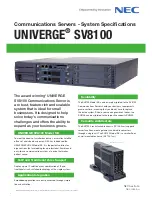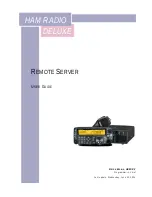
system
users.
Check
with
the
system
administrator
before
using
this
command.
If
you
cannot
use
this
method,
you
can
power
off
the
system
by
pressing
the
power
button
on
the
operator
panel
or
the
appropriate
command
at
the
HMC.
Attention:
Using
the
power
button
on
the
operator
panel
or
commands
at
the
HMC
to
power
off
the
system
can
cause
unpredictable
results
in
the
data
files.
The
next
IPL
will
also
take
longer
to
complete
if
all
applications
in
all
partitions
are
not
stopped
beforehand.
Powering
the
System
On
The
system
can
be
powered
on
after
all
of
the
following
steps
have
been
completed:
v
All
I/O
drawer
cables
are
connected
v
UPIC
cables
are
connected
v
All
PCI
cables
to
supported
subsystems
are
connected
v
The
hardware
management
console
(HMC)
is
connected
v
Power
is
connected
to
the
system
and
the
UEPO
switch
is
set
to
On
After
the
required
cables
are
installed,
and
the
power
cables
are
connected,
the
HMC
graphical
user
interface
provides
a
power-on
function
to
turn
on
the
power
to
the
system.
The
power
button
on
the
media
subsystem
operator-panel
can
be
pushed
to
initialize
the
system,
but
the
preferred
method
is
to
use
the
HMC.
Progress
indicators,
also
referred
to
as
checkpoints
,
are
visible
on
the
media
subsystem
operator
panel
display
as
the
system
power
is
turned
on.
The
power
LED
on
the
media
subsystem
stops
blinking
and
stays
on,
indicating
the
system
power
is
on.
The
processor
subsystem
and
I/O
subsystems
are
powered
on
through
the
system
power
control
network
(SPCN).
When
power
is
applied,
the
power
LEDs
on
the
media
subsystem
go
from
blinking
to
on
continuously,
and
the
power
LEDs
on
the
processor
subsystem
and
I/O
subsystem(s)
come
on
and
stay
on.
This
indicates
that
power
levels
are
satisfactory
in
the
subsystems.
Powering
On
the
System
Using
the
Service
Processor
The
system
can
be
powered
on
using
the
System
Power
Control
menu,
which
is
a
Service
Processor
menu
that
is
available
to
the
privileged
user.
Chapter
9.
Removal
and
Replacement
Procedures
857
Summary of Contents for eserver pSeries 690
Page 1: ...pSeries 690 Service Guide SA38 0589 05 ERserver...
Page 2: ......
Page 3: ...pSeries 690 Service Guide SA38 0589 05 ERserver...
Page 12: ...x Eserver pSeries 690 Service Guide...
Page 14: ...xii Eserver pSeries 690 Service Guide...
Page 228: ...Step 1527 5 Call your next level of support 212 Eserver pSeries 690 Service Guide...
Page 362: ...Step 1545 15 Call for support This ends the procedure 346 Eserver pSeries 690 Service Guide...
Page 381: ...Step 154A 14 Turn off the power Chapter 3 Maintenance Analysis Procedures 365...
Page 430: ...414 Eserver pSeries 690 Service Guide...
Page 798: ...782 Eserver pSeries 690 Service Guide...
Page 923: ...L3 Cache Shorts Test Step 4 Chapter 9 Removal and Replacement Procedures 907...
Page 924: ...L3 Cache Shorts Test Step 5 908 Eserver pSeries 690 Service Guide...
Page 926: ...L3 Cache Shorts Test Step 2 910 Eserver pSeries 690 Service Guide...
Page 928: ...L3 Cache Shorts Test Step 4 912 Eserver pSeries 690 Service Guide...
Page 929: ...L3 Cache Shorts Test Step 5 Chapter 9 Removal and Replacement Procedures 913...
Page 1055: ...7040 Model 681 Media Subsystem 1 2 3 4 5 6 7 8 9 10 Chapter 10 Parts Information 1039...
Page 1057: ...Power and SCSI Cables to the Media Subsystem 1 2 3 5 4 6 Chapter 10 Parts Information 1041...
Page 1061: ...Power Cabling Chapter 10 Parts Information 1045...
Page 1090: ...1074 Eserver pSeries 690 Service Guide...
Page 1094: ...1078 Eserver pSeries 690 Service Guide...
Page 1122: ...1106 Eserver pSeries 690 Service Guide...
Page 1124: ...1108 Eserver pSeries 690 Service Guide...
Page 1132: ...1116 Eserver pSeries 690 Service Guide...
Page 1133: ......
Page 1134: ...Printed in U S A February 2004 SA38 0589 05...















































